02/24/22
Watch the final ‘Working Lands, Working Communities’ workshop in Boise, Idaho
At the final workshop for his WGA Chair Initiative, ‘Working Lands, Working Communities,’ Idaho Gov. Brad Little stressed the need for collaborative land management to continue the region’s economic growth and develop more resilient western communities for generations to come.
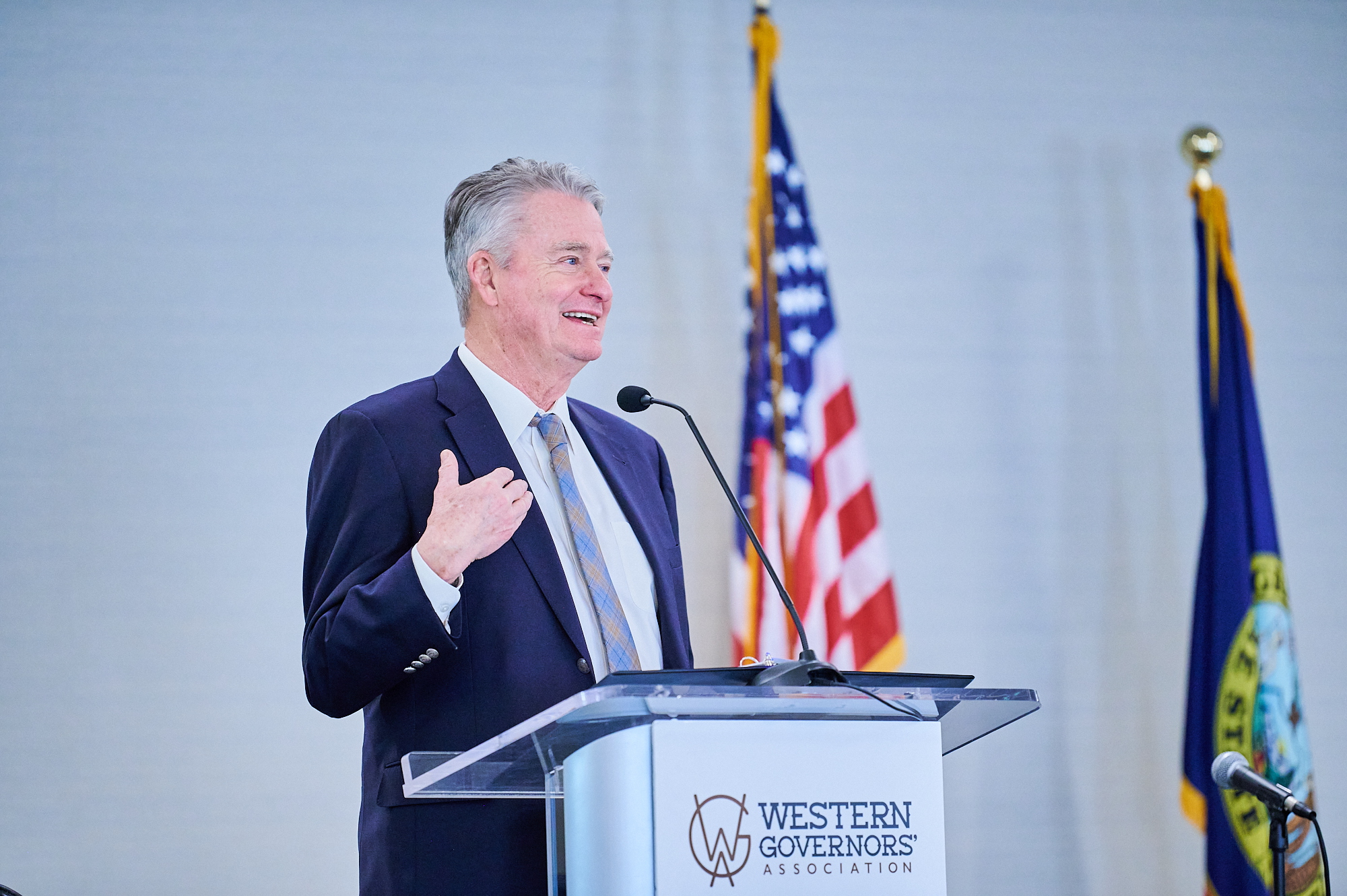 "It’s important that we continue to look at improving how we make our communities more resilient," Gov. Little said. "Everybody says we want healthier watersheds, we want less catastrophic fire, we want (better management of) invasive species. Those overarching goals need to have legs under them –policies, recommendations, where to best invest the next available dollar – and that’s what we expect as a result of these panels."
"It’s important that we continue to look at improving how we make our communities more resilient," Gov. Little said. "Everybody says we want healthier watersheds, we want less catastrophic fire, we want (better management of) invasive species. Those overarching goals need to have legs under them –policies, recommendations, where to best invest the next available dollar – and that’s what we expect as a result of these panels."
In particular, the Governor’s touched on the opportunities provided as part of the Infrastructure and Jobs Act as well as the American Rescue Plan Act to fund projects that advance these priorities.
"The states do have the good fortune of having a significant increase in resources, whether it be the infrastructure bill or ARPA," he said, "but how do we get that money deployed and not waste it and really move the needle on water infrastructure, on sewer, on maximizing recreational opportunity?"
Over the two-day workshop regional experts from local, state and federal agencies, along with private landowners, sought to answer that question with roundtable discussions on rangeland fire protection associations, invasive species management, sustainable rangeland markets and forest management infrastructure. You can view all workshop sessions by clicking on the links below.
Feb. 23
WATCH: Introductory Remarks by WGA Chair, Idaho Gov. Brad Little
WATCH: Roundtable I – Natural Infrastructure for Economic Development
This panel examined opportunities to pursue natural infrastructure solutions, such as meadow and floodplain restoration, that promote the ecological health and productivity of working lands.
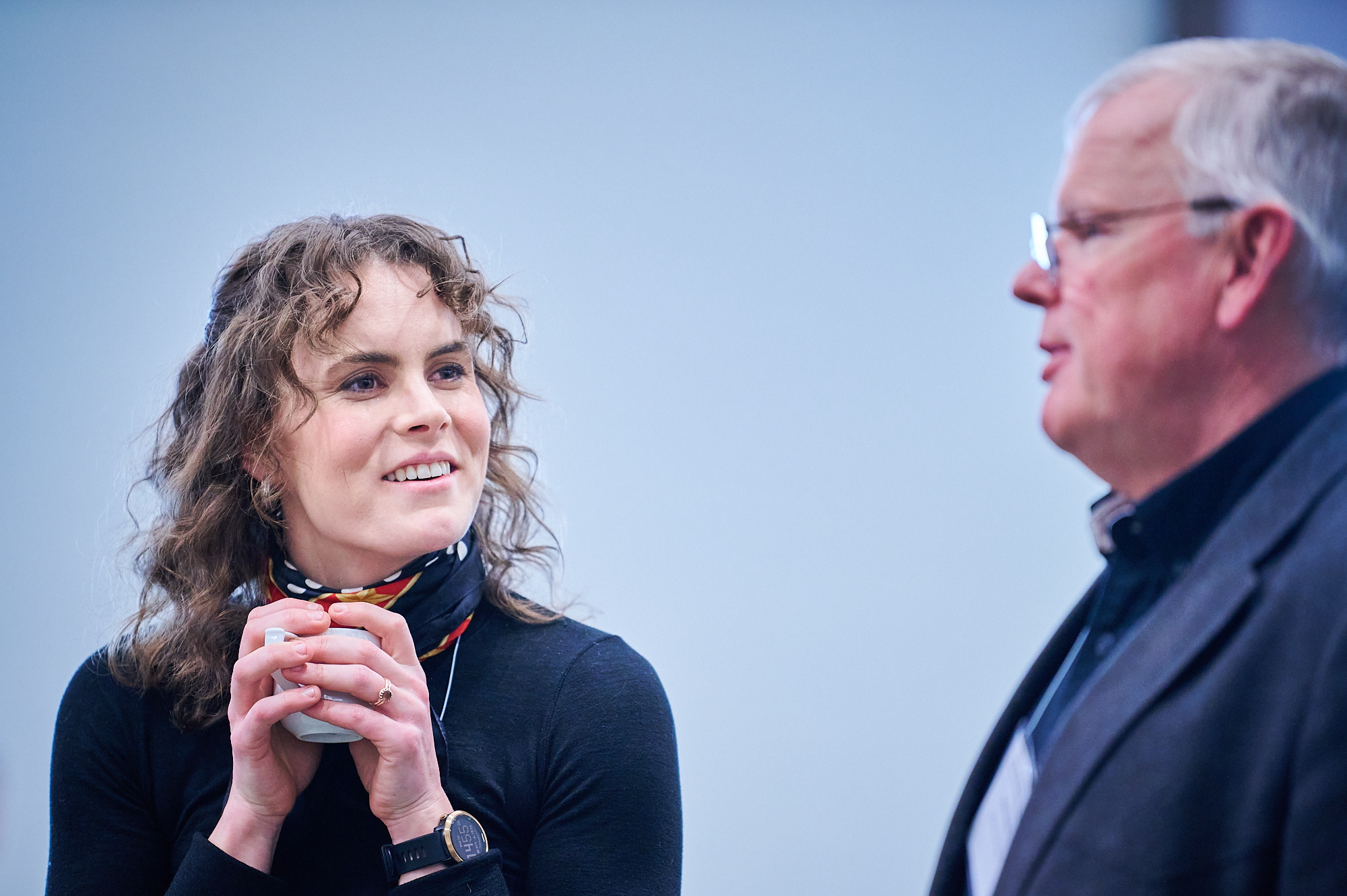 Merrill Beyeler, Board Member, Idaho Rangeland Resource Commission: “Agricultural lands, natural resources, and rural communities are all endangered species in Idaho... If they have a great fall, we will certainly have less success than all the king’s men who tried to put Humpty Dumpty back together again.”
Merrill Beyeler, Board Member, Idaho Rangeland Resource Commission: “Agricultural lands, natural resources, and rural communities are all endangered species in Idaho... If they have a great fall, we will certainly have less success than all the king’s men who tried to put Humpty Dumpty back together again.”
Dr. Caroline Nash, Principal, CK Blueshift and Trout Unlimited: “It's about getting the right money to the right people to complete the right projects.”
Brad Johnson, Agriculture Strategy Manager, The Nature Conservancy: “It’s hard for the farmer to buy a piece of equipment to demonstrate on their own farm how to (improve soil health)."
WATCH: Roundtable II – Meeting the Threat of Invasives
Invasive annual grasses are a catalyst for wildland fires and have major adverse impacts on sagebrush biome and other western landscapes. This panel examined the efforts of various partners to address the cross-boundary threat of invasive annuals on western landscapes and share best practices for mitigation, management, and maintaining up-to-date data.
Curtis Elke, Idaho State Conservationist, Natural Resources Conservation Service: “Cheatgrass on the landscape doubles the risk of wildfire and we want to flip the script on how this happens.”
Patt Dorsey, Director of Conservation Operations, National Wild Turkey Federation: “In order to move away from random acts of conservation, which don’t address the scale of the threats we are facing, we need partnerships which can provide better solutions.”
Darcy Helmick, Land Manager, Simplot Livestock Company: “Rangeland Fire Protection Associations in the Twin Falls district were started during the 2012 fire season. After nearly 2 million acres burned from 2002-2012, only 618,415 acres have burnt since 2012.”
WATCH: Roundtable III – Expanding Sustainable Rangeland Markets
Rangeland producers face multiple challenges related to accessing and managing land, manufacturing and marketing products, and delivering goods to market. Speakers on this panel delved into opportunities to improve capacity for manufacturing rangeland products and to expand meat processing facilities in rural communities.
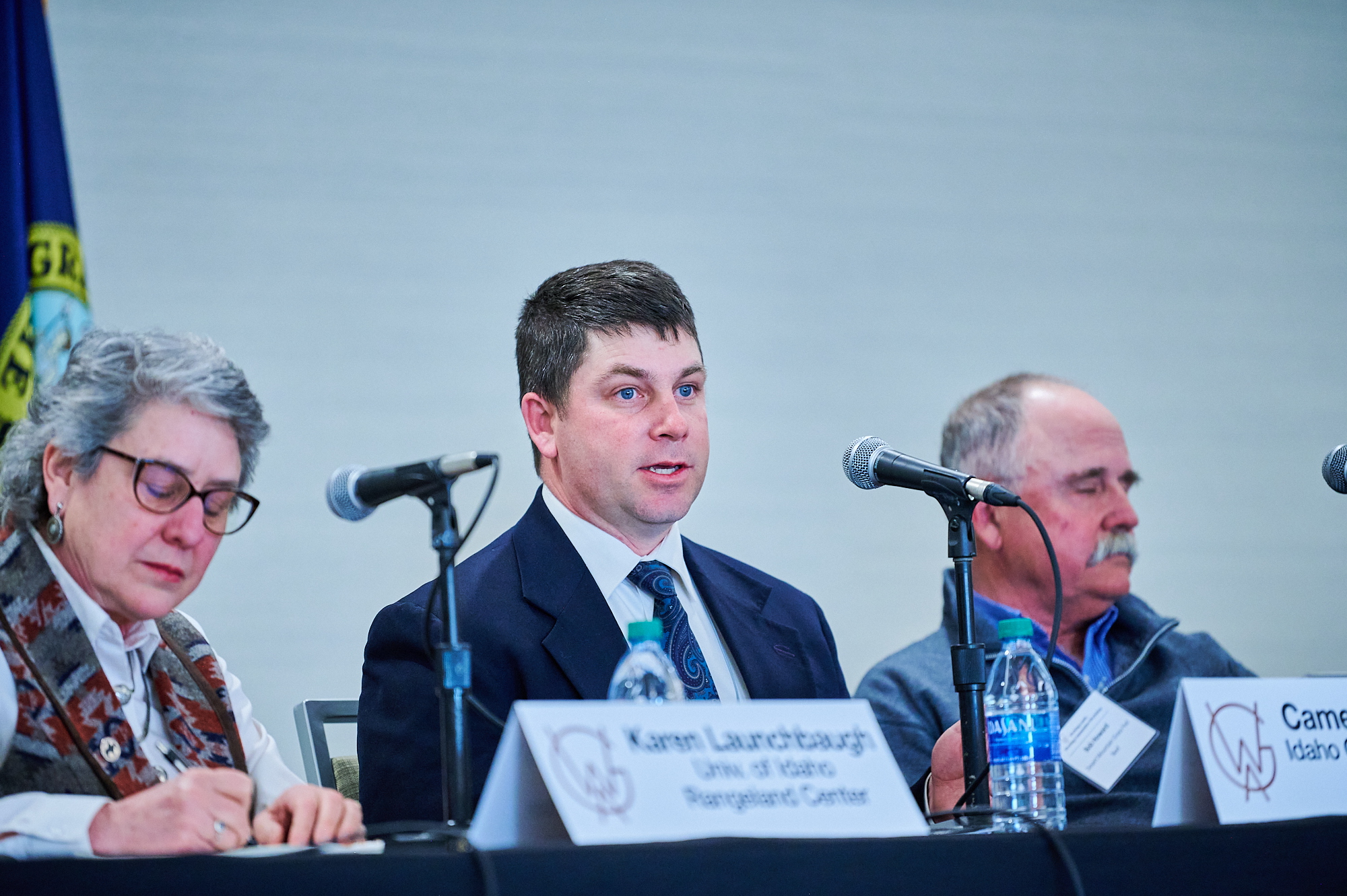 Karen Launchbaugh, Professor of Rangeland Ecology and Director of the University of Idaho Rangeland Center: “The fact that two well-educated people couldn’t tell you [how to incentivize climate-smart practices as an alternative market for ranchers] means that this is an underdeveloped area.”
Karen Launchbaugh, Professor of Rangeland Ecology and Director of the University of Idaho Rangeland Center: “The fact that two well-educated people couldn’t tell you [how to incentivize climate-smart practices as an alternative market for ranchers] means that this is an underdeveloped area.”
Cameron Mulroy, Executive Vice President of the Idaho Cattle Association: “[Cattle-based] thinning can reduce fine fuels and decrease funding requirements (for wildfire mitigation)."
Liz Wilder, Executive Director, Idaho Wool Growers Association: "Sheep and cattle play a very special role in preventing forest fire and in a sense helping Idaho taxpayers not lose their taxes to having to manage, fix and recover forest fires."
Bob Howard, Marketing Partner, Desert Mountian Grass-Fed Beef: “In order to make our country more stable and to skip this food insecurity in these small communities we need to think about (food production) in a bigger picture.”
WATCH: Roundtable IV – Forest Management Infrastructure
Idaho has a robust forest products infrastructure. This panel examined factors contributing to the success of sustainable forest markets in Idaho and offer recommendations to communities seeking to establish the workforce and physical infrastructure to mitigate wildfire risk, improve fish and wildlife habitat and protect vulnerable watersheds.
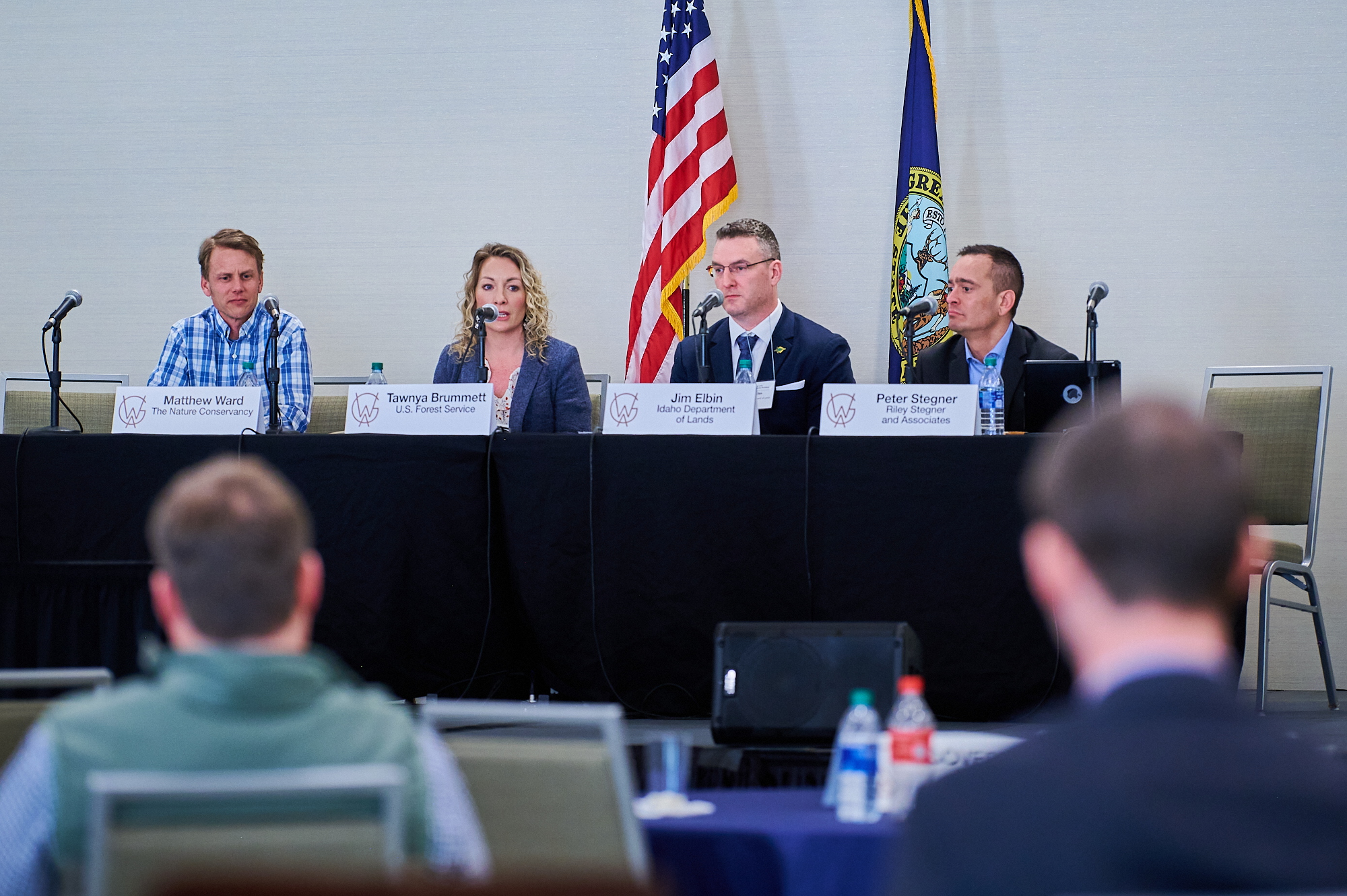 Jim Elbin, Trust Land Division Administrator, Idaho Department of Lands: "I think the key thing is that all of these small communities and some of the bigger ones understand what the forest product’s industry does for their town."
Jim Elbin, Trust Land Division Administrator, Idaho Department of Lands: "I think the key thing is that all of these small communities and some of the bigger ones understand what the forest product’s industry does for their town."
Peter Stegner, Principal, Riley Stegner and Associates: “We have a good thing: people are excited about planting trees. But the forest products industry needs to be ready when these trees are grown.”
Tawnya Brummett, Forest Supervisor, Boise National Forest: “It’s the innovation and the grit of the people of Idaho that keeps them hanging on when times are tough until we can figure out together how to move forward.”
Feb. 24
Watch: Roundtable V – Optimizing Good Neighbor Authority Implementation
Good Neighbor Authority has provided federal agencies, states, tribes and counties a way to form partnerships that increase the pace and scale of restoration work on federal lands. Good Neighbor Authority projects also create local economic benefits and a potential mechanism for funding future restoration work. Panelists will discuss successful implementations of this authority, and ways in which it can be optimized.
Jarod Blades, Resources and Science Branch Chief, US Bureau of Land Management: “Another benefit that we get working with nonfederal entities are the different types of relationships you have across jurisdictions with local communities and landowners – there are things we don’t see; the local connections … that set the foundation for a good project.”
Trevor McConchie, Federal Lands Assistant Division Manager, Washington Department of Natural Resources: “I like to tell our federal partners that our sole purpose is to be here to support you guys.”
Jon Songster, Good Neighbor Authority Bureau Chief, Idaho Department of Lands: "If we’re going to get counties and tribes more involved in (Good Neighbor Authority), and I think we need to because I don’t think we can do it alone, the states have a role to play in helping them stand up those programs and helping them understanding how Good Neighbor Authority programs can and can’t work.”
Tawnya Brummett, Forest Supervisor, Boise National Forest: “(Good Neighbor Authority) has become this partnership of conversations that are happening every day and learning from one another.”
Watch: Roundtable VI – Rangeland Fire Protection Associations
Rangeland Fire Protection Associations (RFPAs) can bolster wildland firefighting capacity by providing support for local landowners to protect their property, their neighbors’ property and critical habitat. These uniquely-positioned nonprofit corporations have reduced response times for firefighting, increasing the odds that fires will remain small. While Idaho, Oregon and Nevada already have RFPAs, this panel will explore ways to expand the implementation of this effective model.
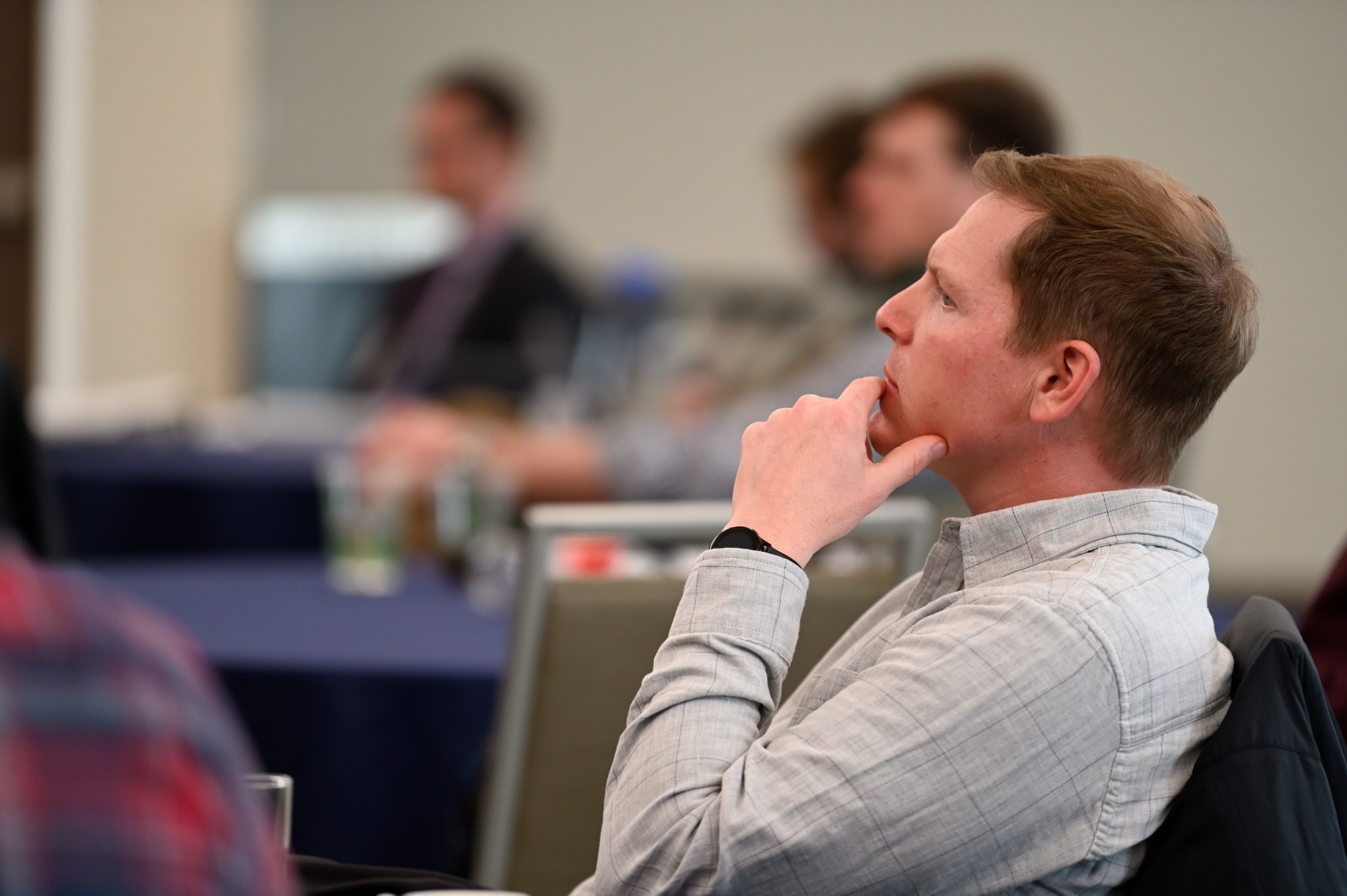
Mike Guerry, Chairperson, Three Creek RFPA: “It goes back to trust – we’re personal friends now. We get to the fire first, we take incident command, and the BLM trusts us enough that I can call in assets – air attack, additional resources. They know we won’t overstate the need. Once BLM crews and assets are on scene we integrate and continue to attack.”
Brent Meisinger, Fire Management Officer, Bureau of Land Management: “RFPAs having a working knowledge of the land better than even the federal crews. They know all the roads, jeep trails, local weather patterns… they grew up here."
Watch: Roundtable VII – Integrating Local Input into Planning Processes
The panel will examine how land management planning processes incorporate local community input and examine ways to increase community engagement in these processes.
Josh Sawislak, Managing Director, Deloitte Consulting LLP: "Capability, reliability, and humanity are how you build relationships with governments.”
Brenda Richards, Coordinator, Idaho Rangeland Conservation Partnership: “Building the trust component is huge, especially in the western states across land ownership boundaries. It’s all gotta work together as a landscape to make it a sustainable community. … we need to understand that trust and local input is what sustains these working communities."
Melissa Hamilton, Associate Extension Professor, University of Idaho: “The power of collaboratives is to take local input and turn it into influence to find the common ground you want to see.”
Ara Andrea, Shared Stewardship Coordinator, Idaho Department of Lands: "To attract local working groups, you need to convey the why adequately – why are we doing this… You also need to show them the results of your project work. Show them it’s not just talk.”
Cheryl Probert, Forest Supervisor, Nez Perce-Clearwater National Forest: "Helping balance the local input with the defined planning process is critical to successfully implement projects on the ground, where the planning process ends."
Watch: Roundtable VIII – The Future of Working Lands, Working Communities
This panel wraps up the workshop series. Summarizes workshop activities, looks ahead to additional webinars, reports and actions.
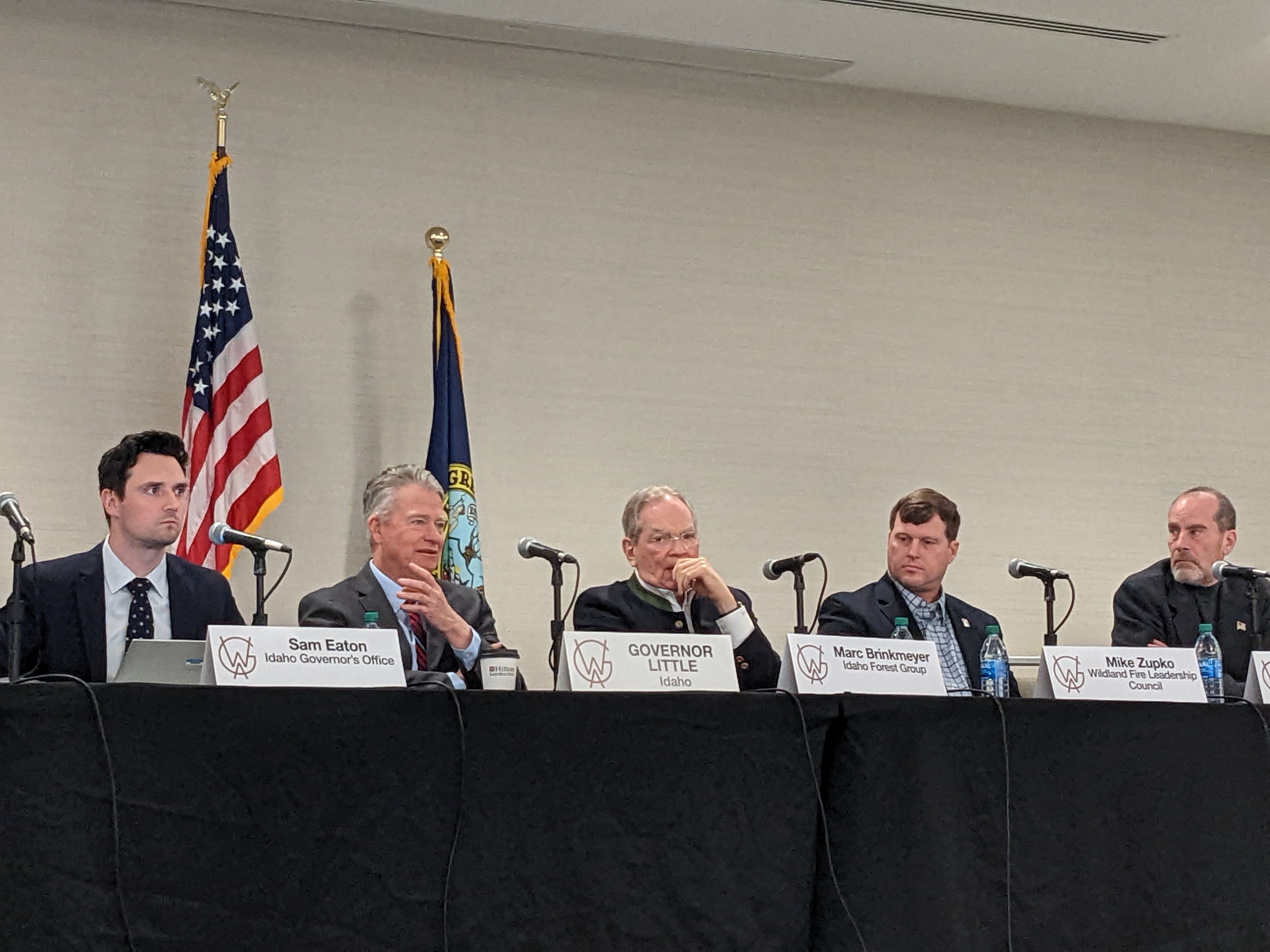 Gov. Brad Little: "The technology may be there… but that doesn’t help you if you don’t have loggers. You need people to maintain the knowledge and the infrastructure and the culture.”
Gov. Brad Little: "The technology may be there… but that doesn’t help you if you don’t have loggers. You need people to maintain the knowledge and the infrastructure and the culture.”
Mike Zupko, Executive Director, Wildland Fire Leadership Council: “Listen to the problems we have in the forest... we’re not setting the bar high enough and we’re not pushing ourselves hard enough.”
Marc Brinkmeyer, Owner, Idaho Forest Group: “We have an opportunity to work with Tom Vilsack and USDA – they’re concerned about the average age of ranchers and farmers because we need to keep ranchers on ranches and farmers on farms. We also need to look at the average age of loggers, because we won’t have healthy forests without a healthy forestry industry.”
Troy Timmons, Director of Federal Relations and Strategic Initiatives, Western Governors' Association: “The relevance of the shared stewardship strategy, like (Good Neighbor Authority), is an opportunity for states to leverage the federal government into helping prioritize land management activities that the states seek to accomplish."
Get the latest news about the West and its governors by following the Western Governors' Association on Twitter, Facebook and LinkedIn.
Check out our podcast, Out West, on Podbean, Spotify and Apple Podcasts.
Take a Survey about the Workshop
WGA has created a survey that allows virtual attendees of the Utah workshop to offer comments on the panel presentations and provide input on the issues the initiative is examining.
Please provide your comments and input on the panel discussions. You do not need to answer every question to submit your survey. You may answer “Not Applicable” or leave the response blank.
Please Note: Incomplete surveys cannot be saved and finished later. We recommend that you read all the questions before you begin entering responses.